As you may have heard, the CARES Act was signed into law on Friday, the 27th of March. There are substantial provisions of benefit to both individuals and small businesses within the Act, designed to help bridge the economic impact gap caused by our efforts to flatten the COVID19 curve. Within this article, I’m going to discuss the highlights of what the provisions of the Act mean for individuals and small businesses. To preface, everything that I’m about to discuss is sourced from the CARES Act itself, and other well known, and vetted industry summaries of the Act that we deem to be reliable. Furthermore, I am not a CPA, and I recommend that everyone consult with your own tax professional regarding the application of the Act to your personal situation.
Some individuals will receive a stimulus check. Those payments will begin at $1,200 for individuals, or $2,400 for those who are married and file income taxes jointly. It also includes $500 per child. But you have to meet certain qualifications in order to be eligible for the money, based on your adjusted gross income in your latest tax returns.
Checks will be reduced by $5 for every $100 exceeding certain adjusted gross income thresholds. Stimulus checks are completely phased out at $99,000 in income for individuals, $146,500 for head of household filers with one child and $198,000 for joint filers with no children.
However, you are still eligible for a check if you have no income or if you rely solely on non-taxable government benefit programs like Supplemental Security Income benefits. Some individuals are specifically excluded from receiving relief checks. That includes nonresident aliens, individuals whose deductions can go to another taxpayer, and estates or trusts.
More importantly, the money will not be counted as taxable income.
For those filing for unemployment, weekly benefits for unemployed workers will rise by $600 per week, for up to four months. Self-employed workers, those seeking part-time work, and workers who quit their job or can’t reach their place of work as a result of COVID-19 are among those eligible for benefits.
I’m not an advocate of dipping into a qualified plan prior to retirement, however the Act waives the 10 percent penalty on early withdrawals of up to $100,000 from qualified retirement plans for coronavirus related distributions made during the 2020 calendar year.
A coronavirus related distribution is one made by someone (or their spouse) diagnosed with COVID-19, or someone who experiences adverse financial consequences as a result of quarantine, business closure, layoff or reduced hours due to the virus. Income from the distributions will be taxed over a three-year period and taxpayers may recontribute withdrawn amounts within three years.
The Act also waives all required minimum distributions for 2020.
For small businesses, employers are allowed a credit against employment taxes equal to 50 percent of qualified wages paid to employees who are not working due to the employer’s full or partial cessation of business or a significant decline in gross receipts. The credit is limited to $10,000 per employee and is for wages paid between March 12, 2020 and January 1, 2021.
Also, payroll taxes due until December 31, 2020 are deferred. Half of the amount will be due December 31, 2021, and the remainder will be due December 31, 2022.
The Act provides for a five-year carryback of net operating losses that arose in 2018, 2019 or 2020, and adjustments have also been made to the business interest expense limitation, and also provides for bonus depreciation for many improvements made to commercial property since September of 2017.
The Payroll Protection Plan offers loans of up to $10 million with a maximum 1% interest rate for amounts that aren’t forgiven.
Small businesses employers are eligible with fewer than 500 employees. 501(c )(3) and
501 (c )(19) organizations are eligible for the PPP loan.
The loan amount is the lesser of the $10 million maximum or for businesses that were in operation over the previous year, 250% of the borrower’s average monthly payroll for the past 12 months, excluding compensation over $100,000. This includes costs of health care insurance including premiums, state and local employer taxes, retirement benefits and certain other costs.
PPP loans may be used to retain workers and maintain payroll, and to pay for specified expenses, including health-care benefits payments, mortgage interest, rent and utility payments. The loan amounts are forgivable to the extent that employers incur or pay payroll costs, health-care benefits payments, mortgage interest, rent and utility payments during the eight-week period following the date of the loan. Businesses do not need to pay interest on loan amounts forgiven, and forgiven amounts are also excluded from federal taxable income.
As the intent of the act is to put money in the hands of small businesses quickly, efforts have been made to streamline the process. Loans made during the covered period are guaranteed by the Federal government, and are obtained through an SBA lender bank.
The Treasury has suggested that the target for getting the funds into the hands of small business employers could be as short as two weeks.
The Small Business Debt Relief Program will provide immediate relief to small businesses with non-disaster SBA loans, in particular 7(a), 504, and microloans. Under it, SBA will cover all loan payments on these SBA loans, including principal, interest, and fees, for six months. This relief will also be available to new borrowers who take out loans within six months of the bill being signed into law.
Economic Injury Disaster Loans & Emergency Economic Injury Grants are grants that provide an emergency advance of up to $10,000 to small businesses and private non-profits harmed by COVID-19 within three days of applying for an SBA Economic Injury Disaster Loan (EIDL). To access the advance, you first apply for an EIDL and then request the advance.
The advance does not need to be repaid under any circumstance, and may be used to keep employees on payroll, to pay for sick leave, meet increased production costs due to supply chain disruptions, or pay business obligations, including debts, rent and mortgage payments.
An employer that applies for an EIDL (regardless of whether related to COVID-19) may also apply for a PPP loan, so long as both loans are not used for the same purpose or are otherwise duplicative. An employer will roll an existing EIDL into a PPP loan by adding the amount of an EIDL to the sum of the payroll costs. However, any advance amount received under the EIDL Grant Program would be subtracted from the amount forgiven of the PPP loan.
All private nonprofit organizations that have been in operation since January 31, 2020, and that have suffered substantial economic injury from COVID-19, are eligible for loans and grants under the EIDL program. Private nonprofit organizations include tax-exempt organizations under 501(c), (d), and (e) of the Internal Revenue Code.
The portions of the CARES Act targeted for the benefit of small business employers could have a significantly positive impact. These measures could mean the difference between employees simply being laid off, or being furloughed with pay. The latter could go a long way toward bridging the economic gap that resulted from orders to shelter at home, and other measures of social distancing that lead to a temporary sharp decline in economic productivity. The greatest benefit may be that it helps to preserve the purchasing power of millions of tax payers at this time, so that we have the chance to emerge strongly once this period of time comes to an end.







